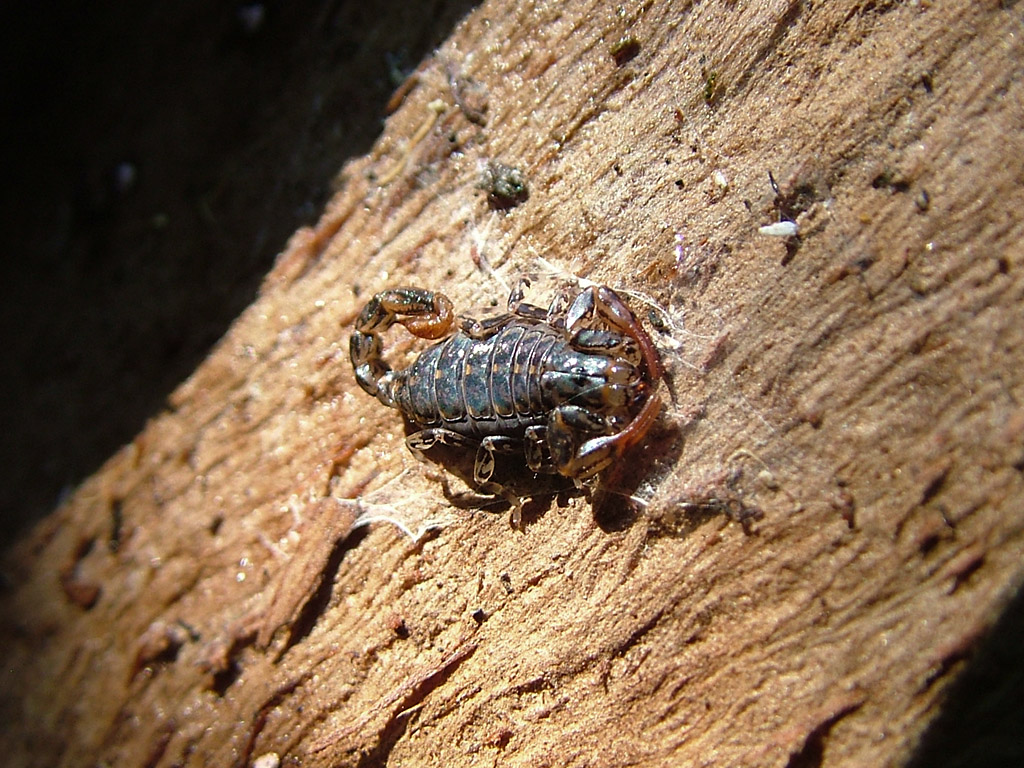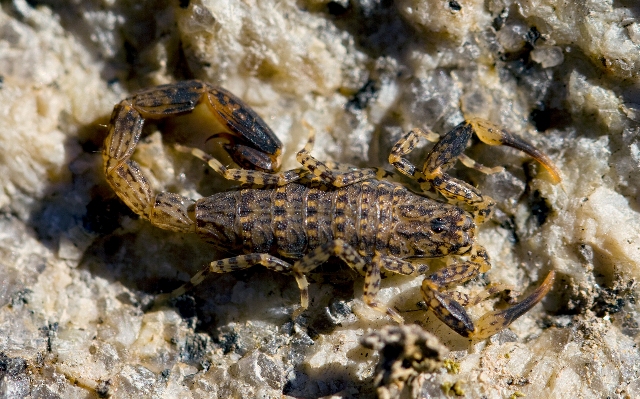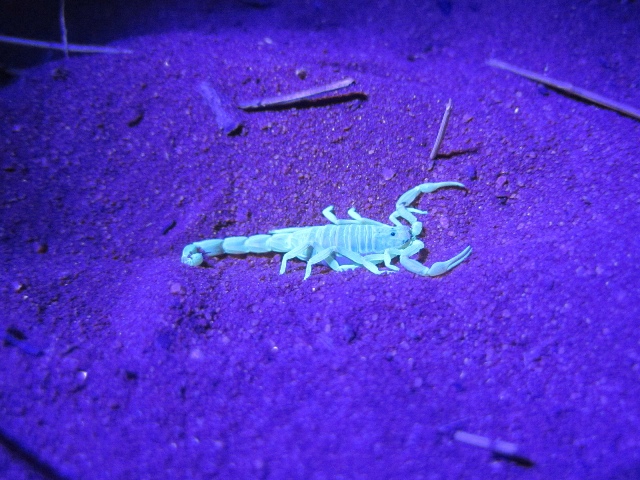Phylum Arthropoda
Subphylum Chelicerata
Class Arachnida
Order Scorpiones
Common name: scorpions
Overview
After spiders, scorpions are the most familiar arachnids. They are instantly recognisable by the infamous venomous sting at the end of the tail-like (metasoma) abdomen. The other feature making scorpions easily recognisable are the presence of chelate (crab- or pincer-like) pedipalps, which may be massively developed in some species while thin and delicate in others. On the underside of the body, scorpions possess a pair of unique appendages, pectines (comb-like structures), that pick up ground textures, vibrations and scents (using mechanoreception and chemoreception). At night, scorpions fluoresce under ultraviolet light, which can be used to locate them in the field. Scorpions range in size from about 2-12 cm in length. Globally, very few species are proven to be life-threatening to humans, although in some countries (e.g. Mexico) mortality due to scorpion stings is of serious concern, and there has been considerable research into developing antivenenes for species that endanger human life. In Australia, scorpion stings are only recorded as causing temporary localised pain. Interestingly, like spiders, some research efforts have been directed at the composition of scorpion venoms in the search for pharmacologically useful compounds.
Distribution and diversity
Scorpions have a continent-wide distribution in Australia. There are over 1,200 species recognised worldwide, but Australia has only 41 described species in eight genera, accommodated in four families. However, the true size of the fauna has been estimated up to 200 species.
Life cycle
Mating in scorpions involves a ritualised �dance�, in which the male and female perform precise movements of the pedipalps and short, rapid body movements. The male usually grabs the female pedipalps and chelicerae with his pedipalps and the two begin a series of forwards-backwards walks. Eventually the male deposits a spermatophore (sperm packet) and positions the female over it, which she takes into her gonopore (genital opening). Unlike many arthropods, development of the eggs and embryos is internal and young are born alive after a gestation that can be as long as 18 months, but is usually much shorter. After birth, the white juveniles crawl onto the abdomen of their mother, where they stay until shortly after the first moult, when they become independent. Scorpions take a considerable time to mature, moulting up to five or six times over 2-6 years. They can live for 2-10 years with some recorded living up to 25 years.
Feeding
Scorpions are nocturnal predators and usually prey on smaller arthropods such as insects, spiders, centipedes, millipedes and even other scorpions. However, some large species are capable of killing and eating small lizards, snakes and frogs. Moving prey items are sensed by the pectines, slit-like organs on the legs, and sensory hairs on the pedipalps and body, that pick up ground vibrations and scents. Preys are held with the pincer-like pedipalps, while the sting is brought forward to inject the venom. Species with more massive pedipalps are capable of killing the prey with the pedipalps alone, and thus only occasionally employ venom to subdue prey. Most scorpion venoms only paralyze the prey. Like most other arachnids, prey is pre-orally digested. The immobilised prey is torn into pieces with the chelicerae, which are used to mash small portions with digestive enzymes. The liquefied portion is then sucked up, and a new portion is torn away.
Ecology
Many scorpions have become successful inhabitants of deserts where they excavate deep, spiraling underground burrows. Some forest and woodland species construct more shallow burrows, while many shelter under rocks, logs and the bark of trees. Scorpions are sometimes very abundant and their predatory impact on invertebrate communities is thought to be significant.
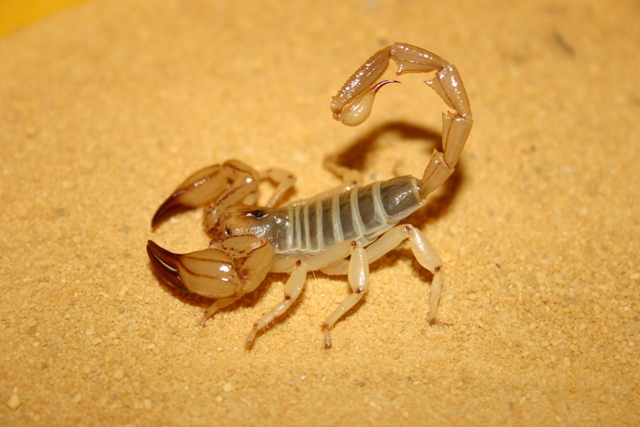
Urodacus armatus
Image credit: Photographer: Mark Harvey
� Western Australian Museum

Buthidae
Image credit: Photographer: Mark Harvey
� Western Australian Museum
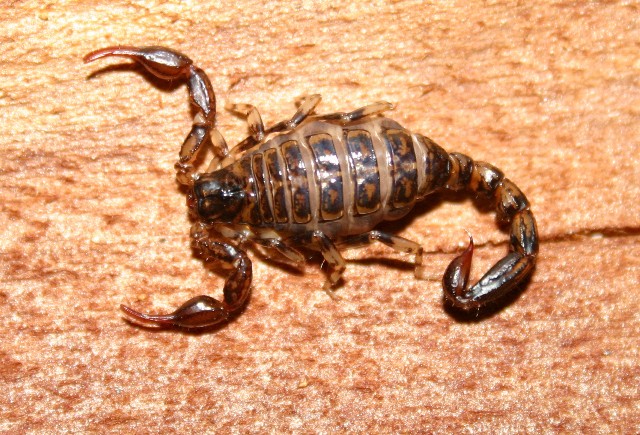
Cercophonius sp.
Image credit: Photographer: Mark Harvey
� Western Australian Museum
